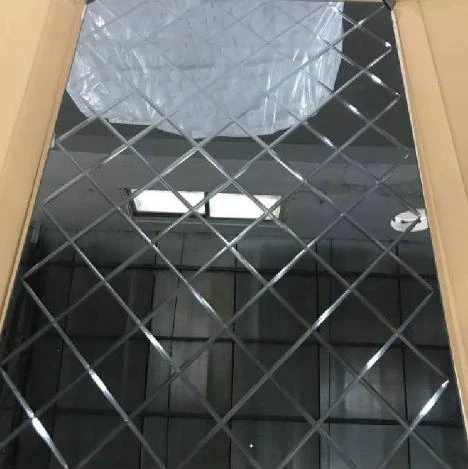The Evolution and Impact of Flat Glass Production
Flat glass production, a cornerstone of the modern construction and automotive industries, has significantly evolved over the decades. This type of glass, characterized by its flat surface and uniform thickness, is essential for creating windows, doors, facades, and various interior applications. The process of manufacturing flat glass is intricate, involving detailed technological advancements that enhance both quality and efficiency.
The flat glass production process begins with the selection of raw materials, which typically include silica sand, soda ash, and limestone. These materials are carefully mixed and melted at high temperatures in large furnaces. Historically, flat glass was produced using the crown glass or cylinder glass methods, which were labor-intensive and resulted in various imperfections. However, the introduction of the float glass process in the1950s revolutionized the industry. This method, pioneered by Sir Alastair Pilkington, involves floating molten glass on top of molten tin, allowing for a smooth, perfectly flat surface as the glass cools.
The popularity of flat glass surged in the latter half of the 20th century, driven by architectural innovation and increasing demand for energy efficiency. The advent of energy-efficient glass, such as double-glazed and low-emissivity (Low-E) glass, has been instrumental in reducing energy consumption in buildings. These innovations not only provide better insulation but also minimize UV radiation and glare, enhancing comfort and protecting interiors from fading.
flat glass production
Additionally, the automotive industry's reliance on flat glass has transformed vehicle design, safety, and aerodynamics. Advances in tempered and laminated glass have improved safety standards, significantly reducing the risk of shattering upon impact. Manufacturers now also produce glass that integrates various technologies, such as heating elements for defrosting and antennas for connectivity.
Sustainability has become a critical focus in the flat glass industry. The production methods have adapted to incorporate recycling processes and reduce carbon footprints. Glass is one of the most recyclable materials, and initiatives promoting the use of recycled glass cullet in production help to conserve energy and resources. As manufacturers strive for greener practices, innovations such as solar control coatings and smart glass that can adjust transparency with temperature changes are becoming more prevalent.
Challenges remain, however. The volatility of raw material prices and environmental regulations can impact production costs and operational efficiency. Additionally, the demand for custom solutions and the need for rapid production cycles place pressure on manufacturers to continuously innovate and adapt.
In conclusion, flat glass production has undergone significant transformations, driven by technological advancements and changing market dynamics. As industries increasingly prioritize sustainability and energy efficiency, the future of flat glass holds promising potential for further innovations. Emphasizing quality, safety, and environmental responsibility will be paramount as the industry continues to evolve, making flat glass an indispensable element of modern architecture and product design.
 Afrikaans
Afrikaans  Albanian
Albanian  Amharic
Amharic  Arabic
Arabic  Armenian
Armenian  Azerbaijani
Azerbaijani  Basque
Basque  Belarusian
Belarusian  Bengali
Bengali  Bosnian
Bosnian  Bulgarian
Bulgarian  Catalan
Catalan  Cebuano
Cebuano  Corsican
Corsican  Croatian
Croatian  Czech
Czech  Danish
Danish  Dutch
Dutch  English
English  Esperanto
Esperanto  Estonian
Estonian  Finnish
Finnish  French
French  Frisian
Frisian  Galician
Galician  Georgian
Georgian  German
German  Greek
Greek  Gujarati
Gujarati  Haitian Creole
Haitian Creole  hausa
hausa  hawaiian
hawaiian  Hebrew
Hebrew  Hindi
Hindi  Miao
Miao  Hungarian
Hungarian  Icelandic
Icelandic  igbo
igbo  Indonesian
Indonesian  irish
irish  Italian
Italian  Japanese
Japanese  Javanese
Javanese  Kannada
Kannada  kazakh
kazakh  Khmer
Khmer  Rwandese
Rwandese  Korean
Korean  Kurdish
Kurdish  Kyrgyz
Kyrgyz  Lao
Lao  Latin
Latin  Latvian
Latvian  Lithuanian
Lithuanian  Luxembourgish
Luxembourgish  Macedonian
Macedonian  Malgashi
Malgashi  Malay
Malay  Malayalam
Malayalam  Maltese
Maltese  Maori
Maori  Marathi
Marathi  Mongolian
Mongolian  Myanmar
Myanmar  Nepali
Nepali  Norwegian
Norwegian  Norwegian
Norwegian  Occitan
Occitan  Pashto
Pashto  Persian
Persian  Polish
Polish  Portuguese
Portuguese  Punjabi
Punjabi  Romanian
Romanian  Russian
Russian  Samoan
Samoan  Scottish Gaelic
Scottish Gaelic  Serbian
Serbian  Sesotho
Sesotho  Shona
Shona  Sindhi
Sindhi  Sinhala
Sinhala  Slovak
Slovak  Slovenian
Slovenian  Somali
Somali  Spanish
Spanish  Sundanese
Sundanese  Swahili
Swahili  Swedish
Swedish  Tagalog
Tagalog  Tajik
Tajik  Tamil
Tamil  Tatar
Tatar  Telugu
Telugu  Thai
Thai  Turkish
Turkish  Turkmen
Turkmen  Ukrainian
Ukrainian  Urdu
Urdu  Uighur
Uighur  Uzbek
Uzbek  Vietnamese
Vietnamese  Welsh
Welsh  Bantu
Bantu  Yiddish
Yiddish  Yoruba
Yoruba  Zulu
Zulu 

